Abstract
Hydrodynamic, spectroscopic, and chemical crosslinking studies on monomer chromatin subnits are reported as a function of ionic strength, pH, and temperature. In earlier studies, two salt-dependent conformational transitions were described (Gordon et al., Proceedings of the National Academy of Science, 75, 660, 1978). Transition one occurred between 0.7 and 2.0 mM ionic strength and transition two occurred between 5.0 and 11.0 mM ionic strength. Crosslinking at 11 mM ionic strength with formaldehyde suppressed both transitions. In this communication we report that the second transition was characterized by changes in the circular dichroism spectra in the 260--320 nm region as well as by changes in the hydrodynamic properties. As the ionic strength was increased from 5.0 to 11.0 mM, [theta]282 decreased from 2000 TO 1500 DEG CM2/DMOLE AND [THETA]295 decreased from 0 to -400 deg cm2/dmole. Both transitions occurred in the pH range from pH 6.0 to 9.2. At pH 5.0, the two ionic strength-dependent transitions were no longer observed and the characteristic changes in the circular dichroism spectra were suppressed. The spectra of the monomer subunits at pH 5.0 showed only small changes with ionic strength and resembled the spectra of the subunits at 11 mM ionic strength above pH 6.0. In order to characterize the transitions in thermodynamic terms an ionic strength near the midpoint of each transition was selected. Then, changes in s20,w and D20,w were measured as a function of temperature. These data allow an estimation to be made of the enthalpies and entropies of the transitions.
Full text
PDF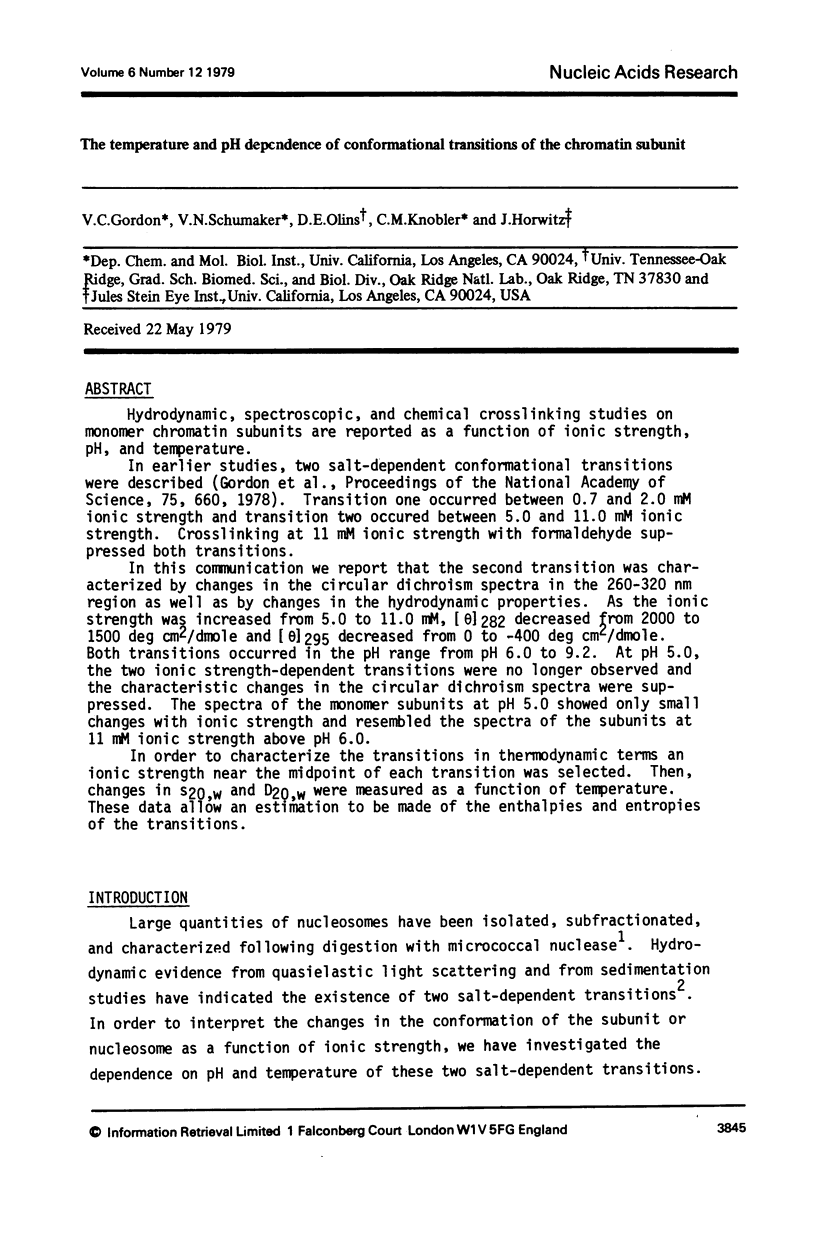
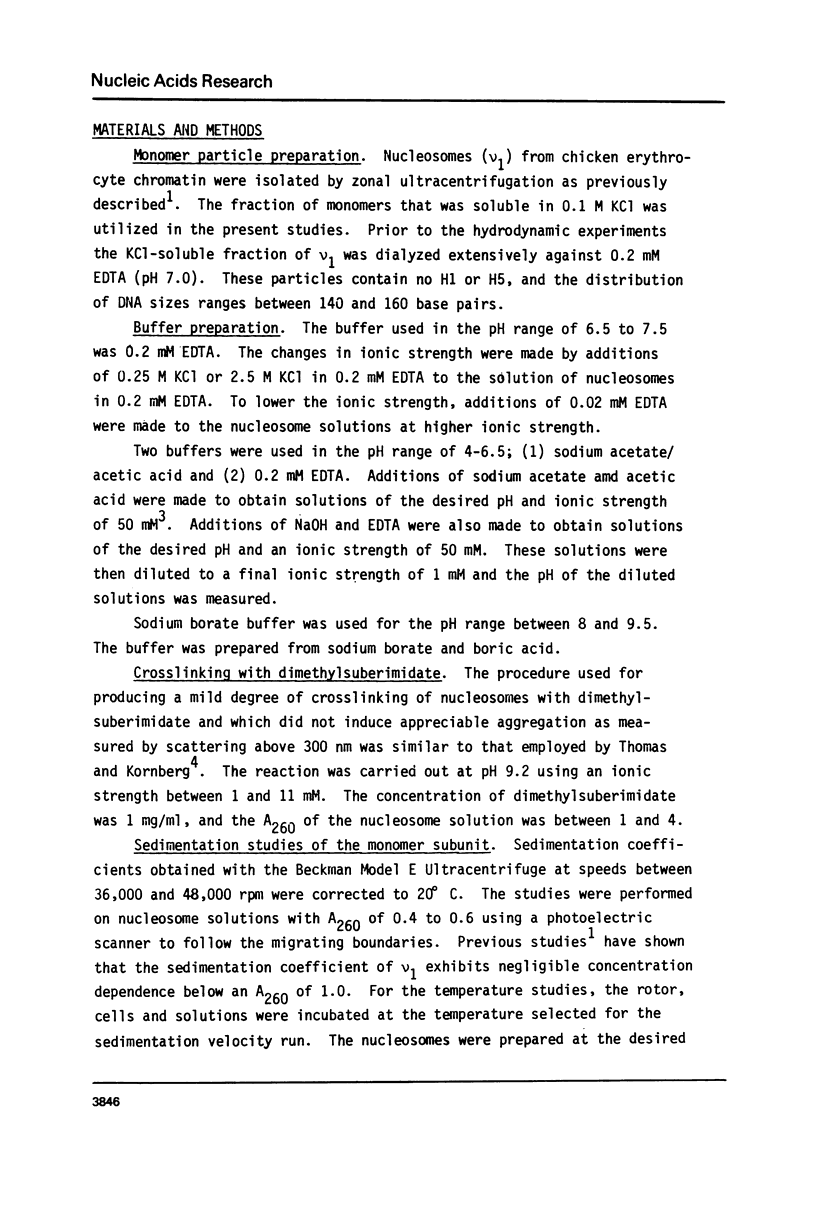
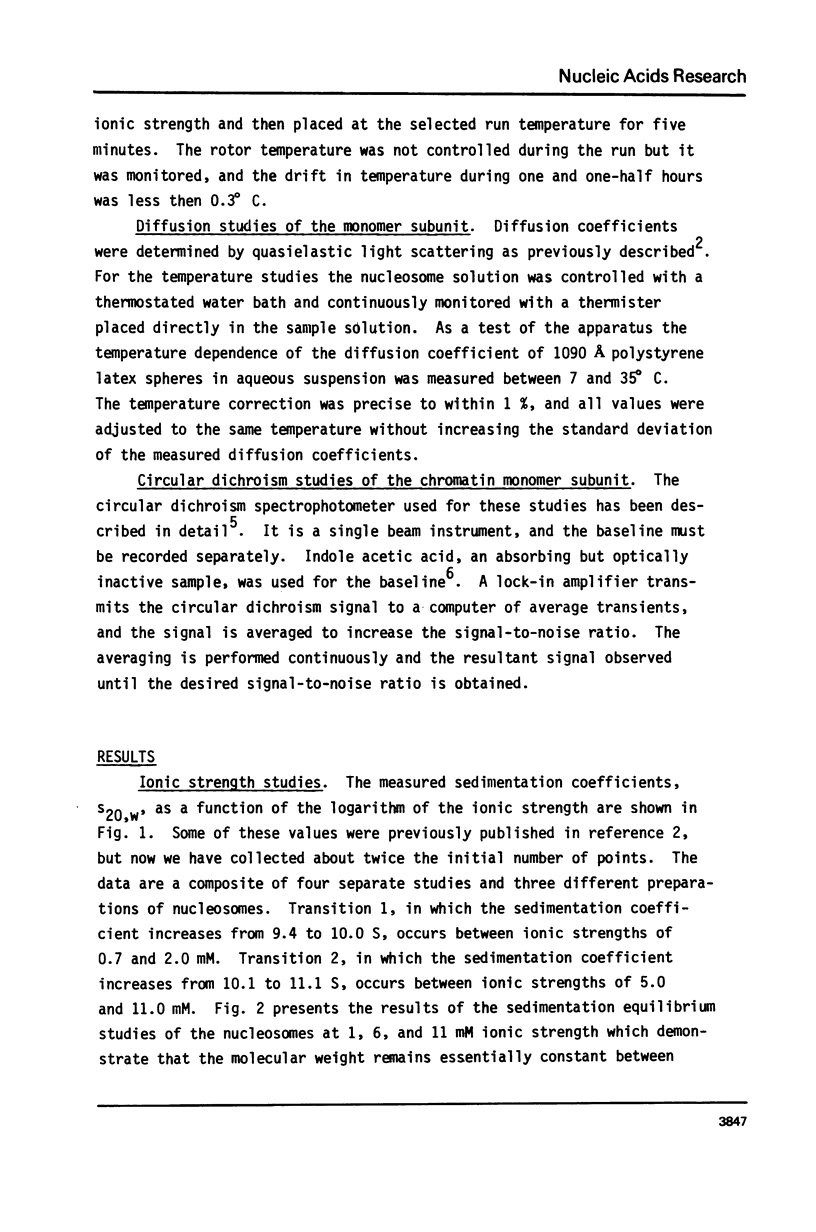

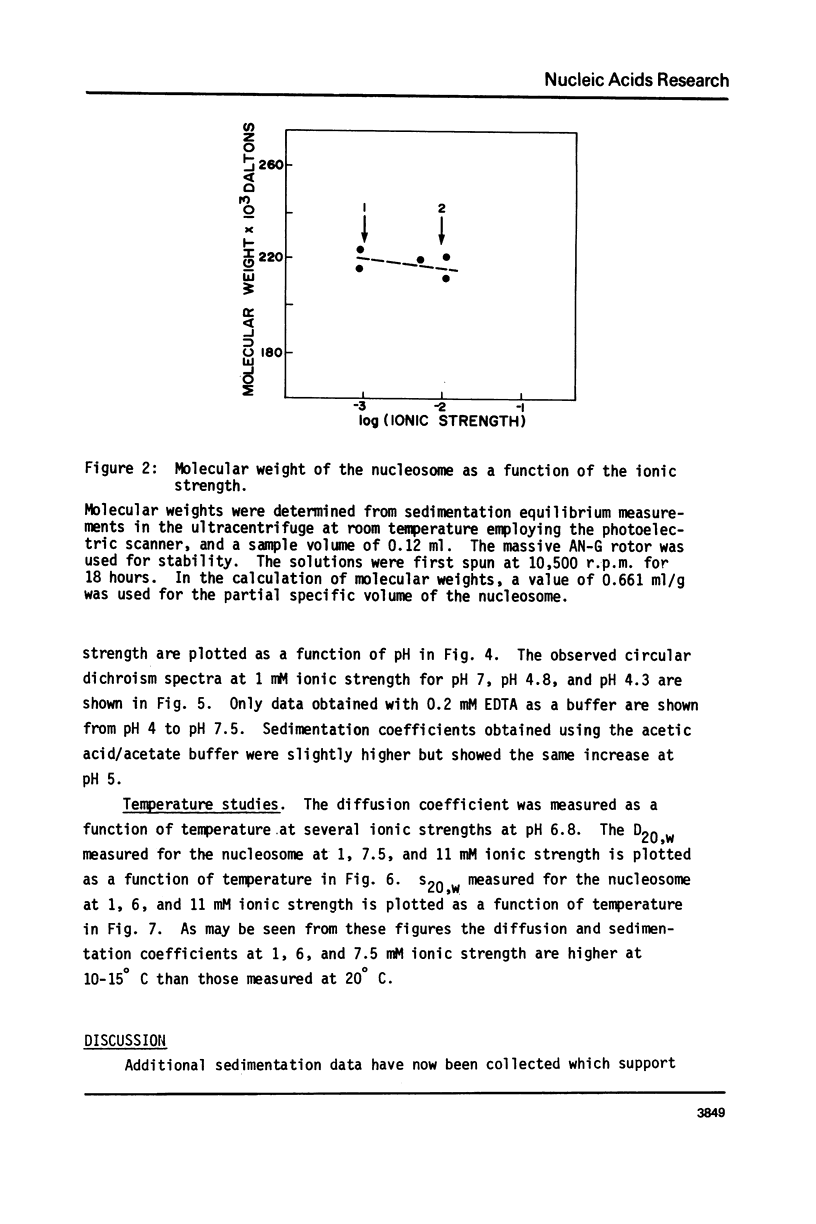


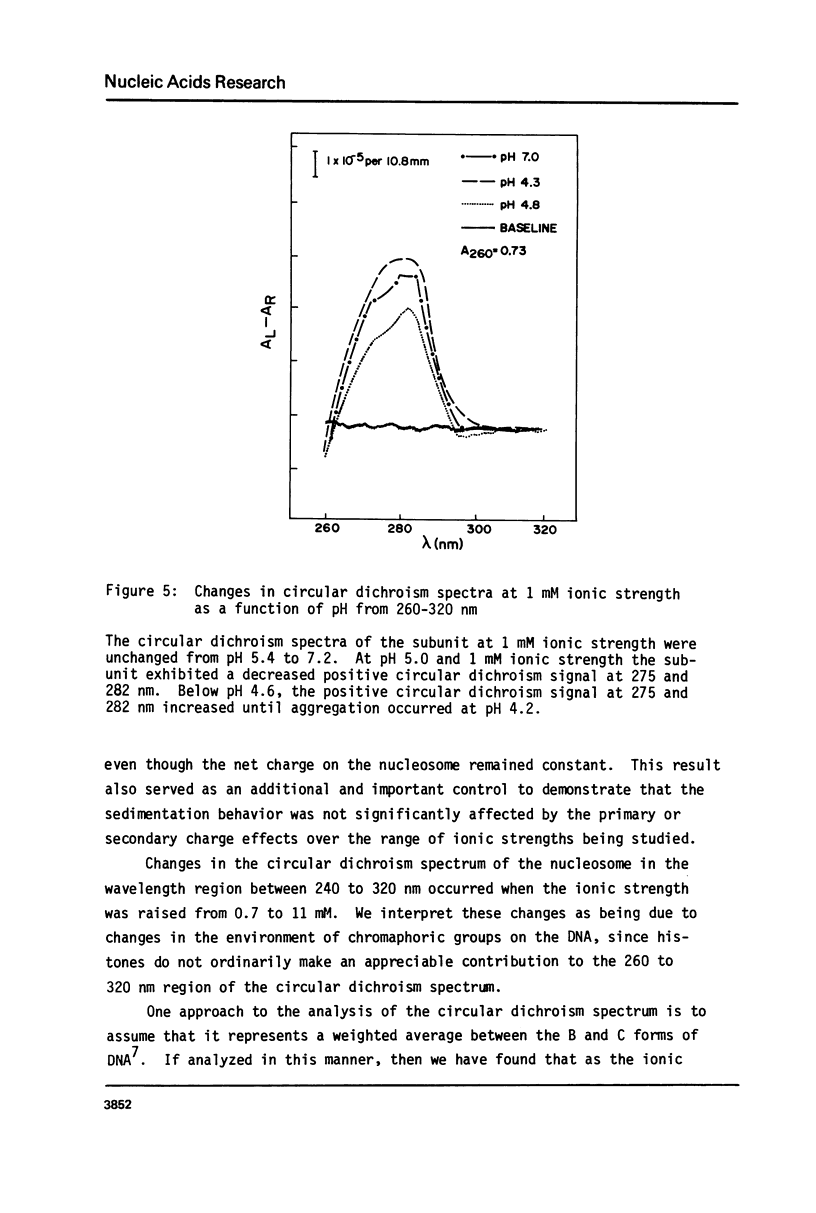
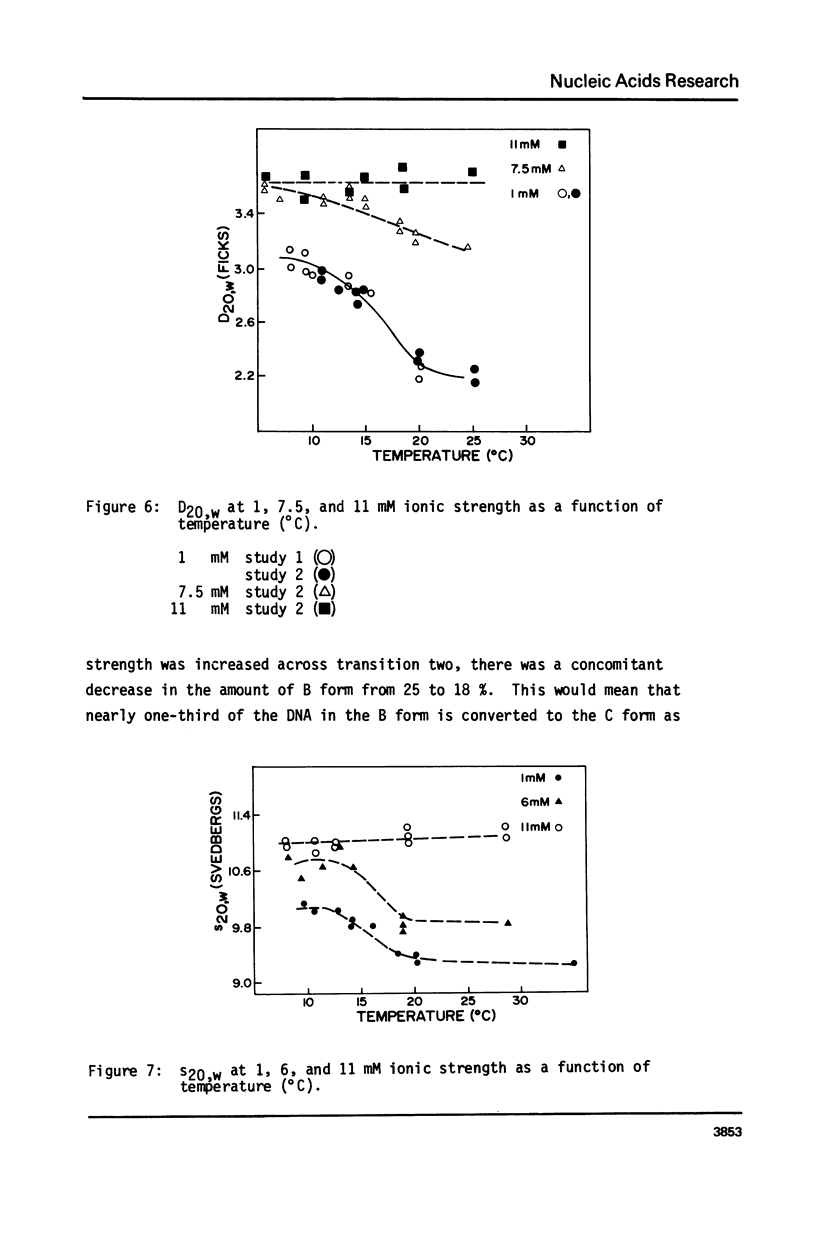
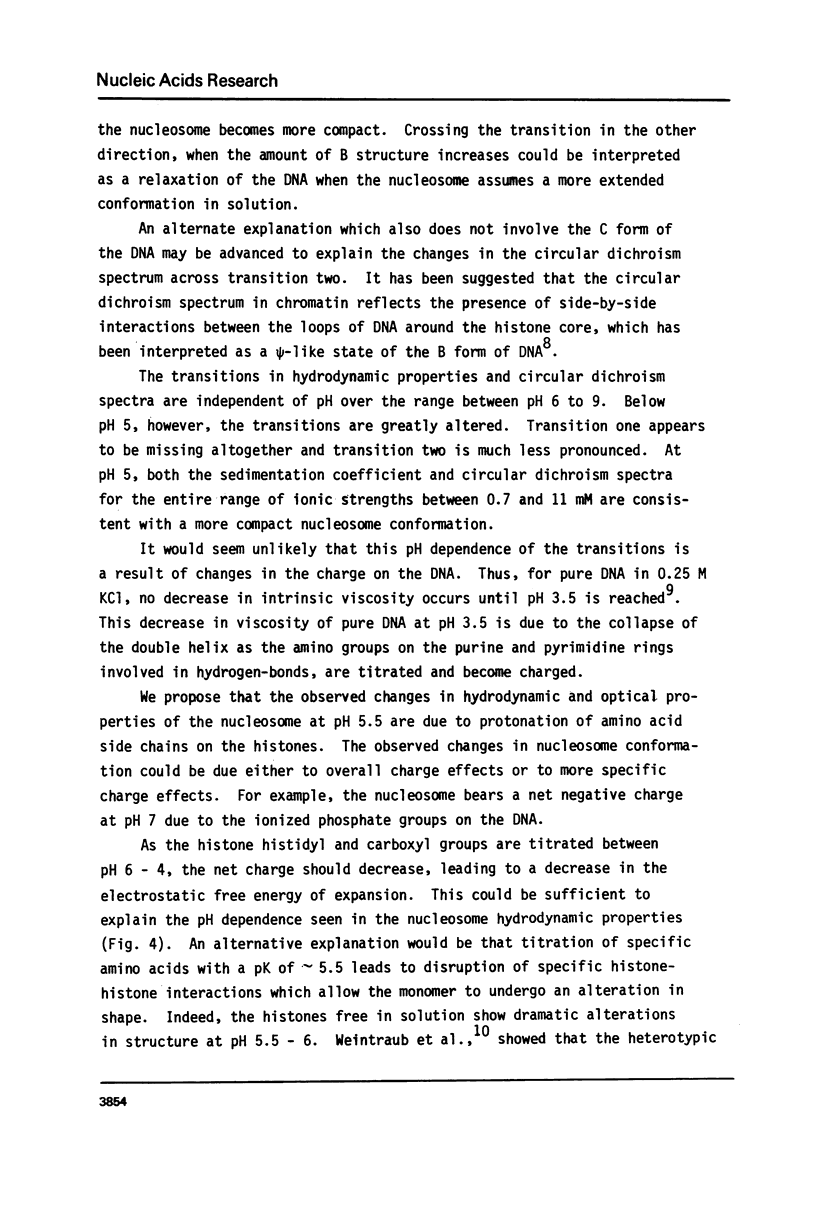


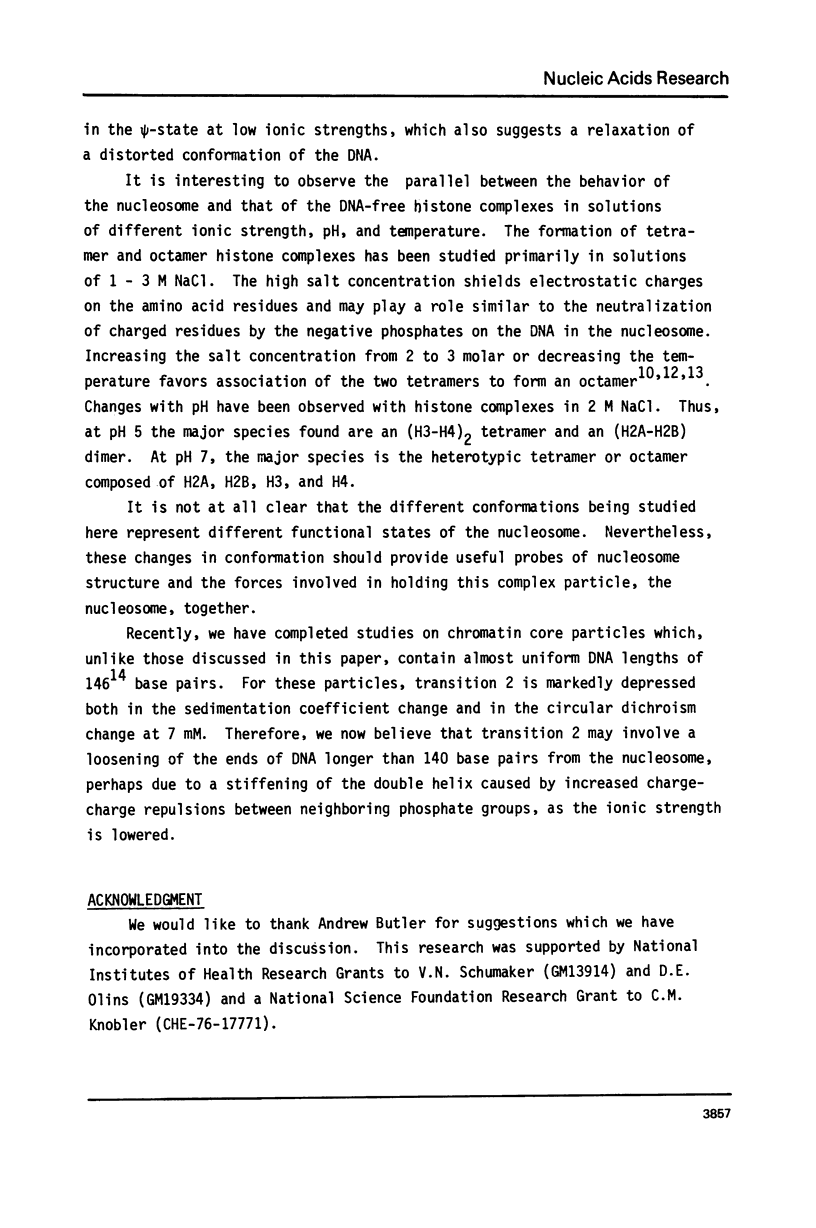
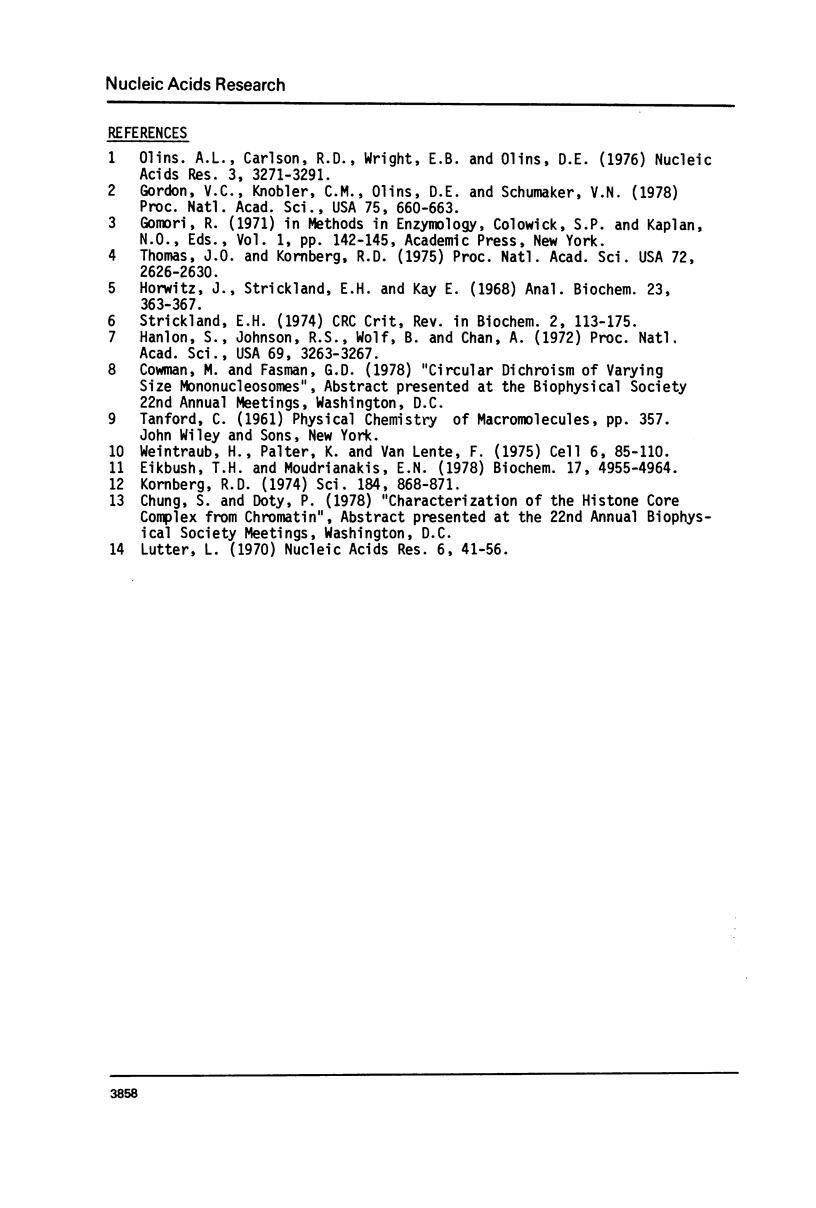
Selected References
These references are in PubMed. This may not be the complete list of references from this article.
- Eickbush T. H., Moudrianakis E. N. The histone core complex: an octamer assembled by two sets of protein-protein interactions. Biochemistry. 1978 Nov 14;17(23):4955–4964. doi: 10.1021/bi00616a016. [DOI] [PubMed] [Google Scholar]
- Gordon V. C., Knobler C. M., Olins D. E., Schumaker V. N. Conformational changes of the chromatin subunit. Proc Natl Acad Sci U S A. 1978 Feb;75(2):660–663. doi: 10.1073/pnas.75.2.660. [DOI] [PMC free article] [PubMed] [Google Scholar]
- Hanlon S., Johnson R. S., Wolf B., Chan A. Mixed conformations of deoxyribonucleic acid in chromatin: a preliminary report. Proc Natl Acad Sci U S A. 1972 Nov;69(11):3263–3267. doi: 10.1073/pnas.69.11.3263. [DOI] [PMC free article] [PubMed] [Google Scholar]
- Horwitz J., Strickland E. H., Kay E. Increased resolution of circular dichroic spectra using a computer of average transients. Anal Biochem. 1968 May;23(2):363–367. doi: 10.1016/0003-2697(68)90373-4. [DOI] [PubMed] [Google Scholar]
- Kornberg R. D. Chromatin structure: a repeating unit of histones and DNA. Science. 1974 May 24;184(4139):868–871. doi: 10.1126/science.184.4139.868. [DOI] [PubMed] [Google Scholar]
- Lutter L. C. Precise location of DNase I cutting sites in the nucleosome core determined by high resolution gel electrophoresis. Nucleic Acids Res. 1979 Jan;6(1):41–56. doi: 10.1093/nar/6.1.41. [DOI] [PMC free article] [PubMed] [Google Scholar]
- Olins A. L., Carlson R. D., Wright E. B., Olins D. E. Chromatin nu bodies: isolation, subfractionation and physical characterization. Nucleic Acids Res. 1976 Dec;3(12):3271–3291. doi: 10.1093/nar/3.12.3271. [DOI] [PMC free article] [PubMed] [Google Scholar]
- Strickland E. H. Aromatic contributions to circular dichroism spectra of proteins. CRC Crit Rev Biochem. 1974 Jan;2(1):113–175. doi: 10.3109/10409237409105445. [DOI] [PubMed] [Google Scholar]
- Thomas J. O., Kornberg R. D. An octamer of histones in chromatin and free in solution. Proc Natl Acad Sci U S A. 1975 Jul;72(7):2626–2630. doi: 10.1073/pnas.72.7.2626. [DOI] [PMC free article] [PubMed] [Google Scholar]
- Weintraub H., Palter K., Van Lente F. Histones H2a, H2b, H3, and H4 form a tetrameric complex in solutions of high salt. Cell. 1975 Sep;6(1):85–110. doi: 10.1016/0092-8674(75)90077-x. [DOI] [PubMed] [Google Scholar]


